13 Hardy Herbs That Keep Growing Through November
November doesn’t have to mark the end of your herb garden. Many herbs are hardy enough to keep growing, even as the weather turns chillier. These herbs bring flavor to your dishes and continue to provide fresh leaves, no matter the season. With a little preparation, you can still harvest from your garden long after the first frost.
This post may contain affiliate links, which helps keep this content free. Please read our disclosure for more info.
Cress
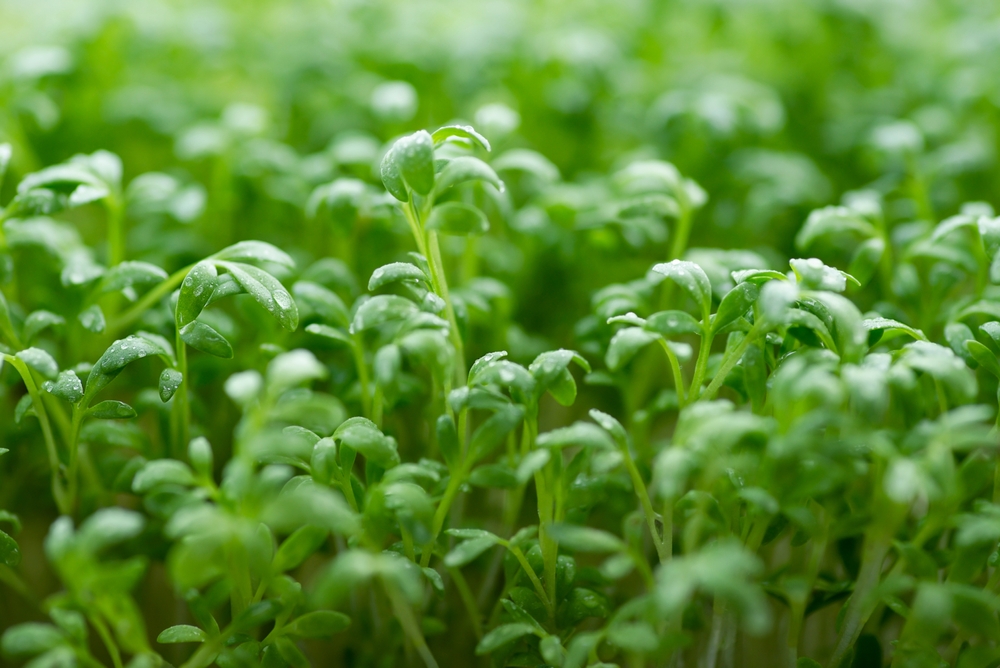
Cress is a fast-growing herb that continues to thrive in the cooler months, making it an ideal choice for November gardening. This herb prefers moist, well-drained soil and does best in partial shade, which makes it perfect for growing during the fall and winter months. Cress grows quickly and can be harvested in just a few weeks, offering a fresh, peppery flavor. To keep it thriving, water the plant regularly, ensuring the soil stays slightly moist but not soggy. Harvesting the leaves often encourages new growth and a continuous supply.
Cress is excellent for adding a sharp, peppery bite to salads, sandwiches, and garnishes. It’s easy to grow in containers, making it a great option for small gardens or even windowsills. Cress thrives in November, even in cooler temperatures, and offers fast results. The plant requires minimal care, making it a fantastic choice for beginners or those who want quick rewards. Its hardy nature allows families to enjoy fresh herbs all fall without much effort.
Oregano
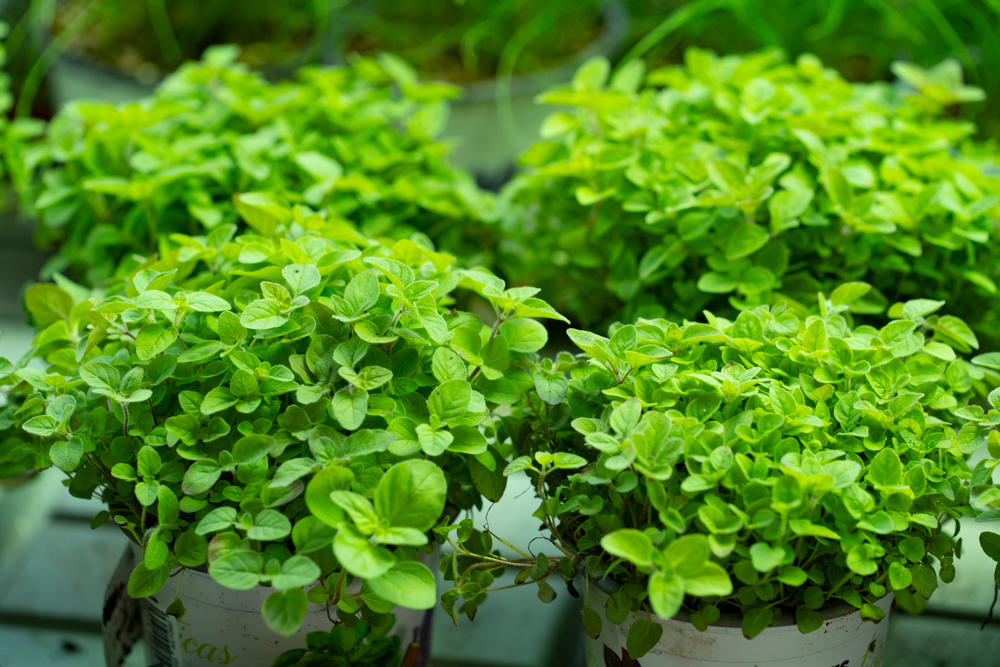
Oregano is a hardy perennial herb that can withstand the colder temperatures of November. This herb thrives in well-drained soil and full sun, although it can tolerate some light shade. To keep oregano growing, make sure the soil is not too wet, as this can lead to root rot. Trim back any dead stems, and water only when the soil feels dry to touch. Oregano can last through winter, especially with light protection from the cold.
Oregano’s robust flavor is perfect for use in Mediterranean and Italian dishes, such as pasta, pizza, and roasted vegetables. It’s a versatile herb that can be used fresh or dried. As a hardy plant, oregano will continue growing in November, providing you with flavorful leaves through the cooler months. Even after a light frost, the plant often bounces back and produces fresh growth in early spring. This herb offers consistent flavor with minimal care, making it an ideal option for your garden.
Thyme
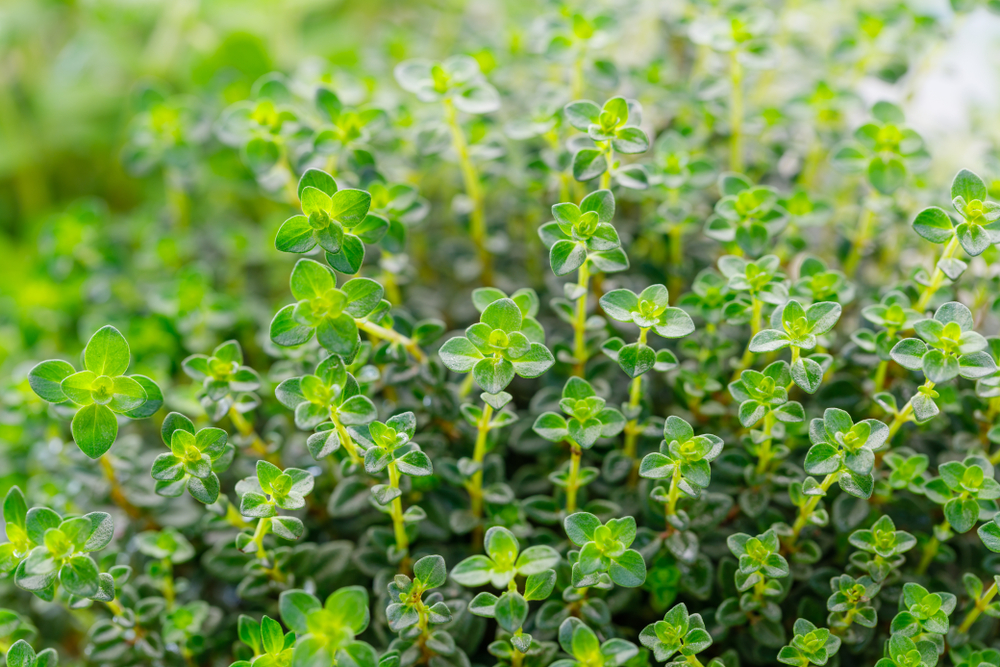
Thyme is one of the most resilient herbs, thriving in cooler temperatures without skipping a beat. It can tolerate frost and still produce flavorful leaves throughout November, especially if it’s planted in well-drained soil. This herb prefers full sun, but it can survive in light shade as well. To care for thyme during the colder months, simply trim back any dead or brown stems and water sparingly to prevent root rot. With minimal maintenance, thyme will continue to provide aromatic leaves for your dishes all fall.
For best results, keep your thyme in a sheltered spot, especially if harsh winds are common in your area. This herb is quite drought-tolerant, so you don’t need to worry about overwatering. Thyme’s small, fragrant leaves make it an excellent addition to soups, stews, and roasted meats during the cooler months. It also attracts beneficial insects, helping with overall garden health. Plant it in a pot if you live in an area with extreme cold, and bring it indoors when necessary.
Rosemary

Rosemary is a hardy herb that thrives in cooler weather and can handle light frost without much problem. This Mediterranean native prefers full sun and well-drained soil that is kept consistently moist. Prune the plant back after the growing season to help it maintain its shape and encourage new growth. During November, a light layer of mulch around the base can help protect the roots from the cold. Rosemary is great for growing through November as it doesn’t require constant care.
This herb is perfect for adding flavor to roasted meats, vegetables, and even homemade breads. Rosemary’s aromatic leaves are a favorite in Mediterranean cooking, adding a distinct pine-like fragrance. It’s a versatile herb that can be harvested fresh throughout the colder months. Rosemary can also be used in holiday wreaths or home decor, making it a multi-purpose herb. Its ability to thrive in November makes it an essential herb in cooler climates.
Sage

Sage is another hardy herb that thrives well into November, offering its unique flavor to a variety of dishes. This perennial herb is able to handle the chill of fall, especially when planted in well-drained soil. Sage enjoys full sun but can tolerate partial shade as well. To care for sage, trim back dead or damaged leaves to promote new growth, and water it only when the soil feels dry. It’s important not to overwater, as sage is prone to root rot if the soil stays too wet.
Sage’s leaves become even more fragrant in the cooler months, making it a favorite for fall recipes. Its woody stems are resilient, and the plant can withstand light frosts without damage. In addition to its culinary uses, sage can also be used for medicinal purposes, such as soothing sore throats. When grown in a sunny spot, sage will continue producing flavorful leaves throughout November. This herb’s deep flavor is perfect for adding to stuffing, roasts, and even teas.
Chives
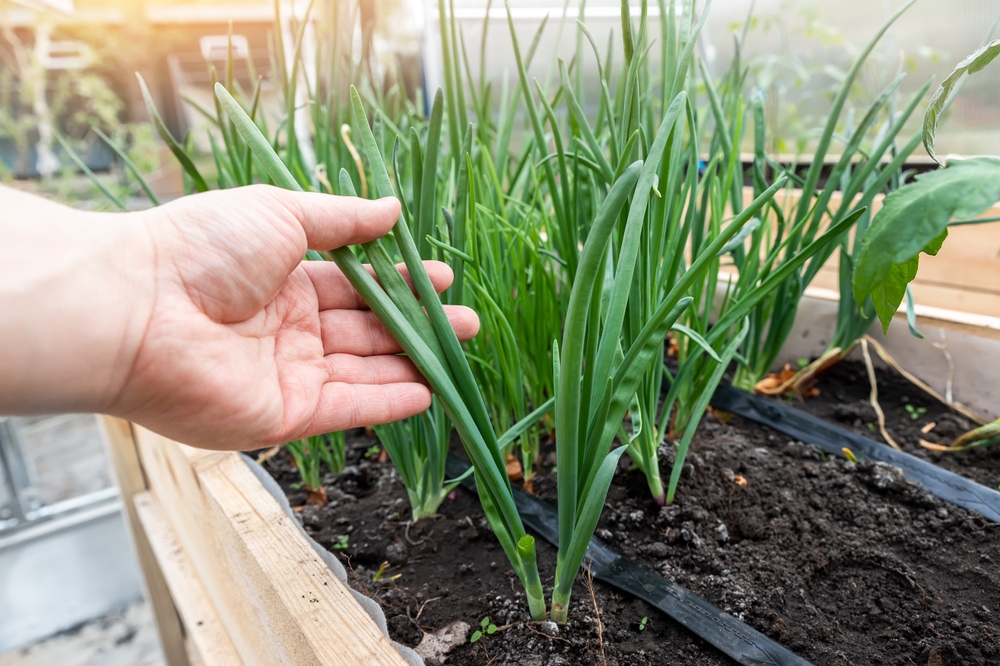
Chives are a cold-hardy herb that thrives even as the weather cools. This plant can tolerate light frosts and continues to grow through November with little care. To help chives survive colder temperatures, cut them back slightly, and ensure they are in a well-drained area. Chives grow best with regular watering but can withstand short periods of drought, making them low-maintenance. During the fall, chives may stop growing as quickly but will bounce back when temperatures rise again in the spring.
Chives are known for their mild onion-like flavor, making them perfect for garnishing soups, salads, and baked potatoes. This herb benefits from being divided every few years, as this helps rejuvenate the plant and prevent overcrowding. If growing in pots, move them to a sheltered spot or indoors when frost is expected. Chives are especially useful in the kitchen for adding a fresh, mild flavor to a variety of dishes. Harvesting them regularly encourages new growth and keeps the plant thriving.
Cilantro

Cilantro is a cool-weather herb that thrives in the fall months, making it perfect for November. Although it tends to bolt in warmer weather, cilantro is incredibly hardy and will continue to grow through chilly temperatures. To keep cilantro healthy during November, plant it in soil that drains well, and give it plenty of sunlight. Water it regularly, but avoid overwatering, as cilantro prefers slightly dry conditions once established. It’s essential to harvest it before the first frost to avoid losing the leaves to cold damage.
This herb is widely used in various cuisines, especially in Mexican, Middle Eastern, and Asian dishes. Its fresh, citrusy flavor makes it a versatile addition to salsas, curries, and salads. Cilantro tends to have a short life cycle, so it’s best to plant multiple batches throughout the year. In November, cilantro can still provide flavor, especially if sheltered from frost. The herb will need replanting as it goes to seed but will keep producing leaves for several weeks.
Tarragon

Tarragon is a hardy herb that holds up well in the cooler months of November. It thrives in full sun and prefers well-drained soil that is kept consistently moist. To maintain healthy growth, trim back any dead or damaged leaves and remove any flower stalks. This herb grows quickly and can be harvested into November, offering a sweet, licorice-like flavor. Tarragon is a great addition to your garden, even as the weather cools, due to its hardiness.
Tarragon adds a delicate, herbal flavor to many dishes, especially those involving chicken, eggs, and fish. Its leaves are commonly used in French cooking, in everything from sauces to salads. Tarragon can be harvested well into November, ensuring you have fresh herbs to use in your meals. For gardeners who enjoy growing herbs that last through the colder months, tarragon is an excellent choice. It’s a hardy, low-maintenance plant that continues to grow through late fall.
Fennel
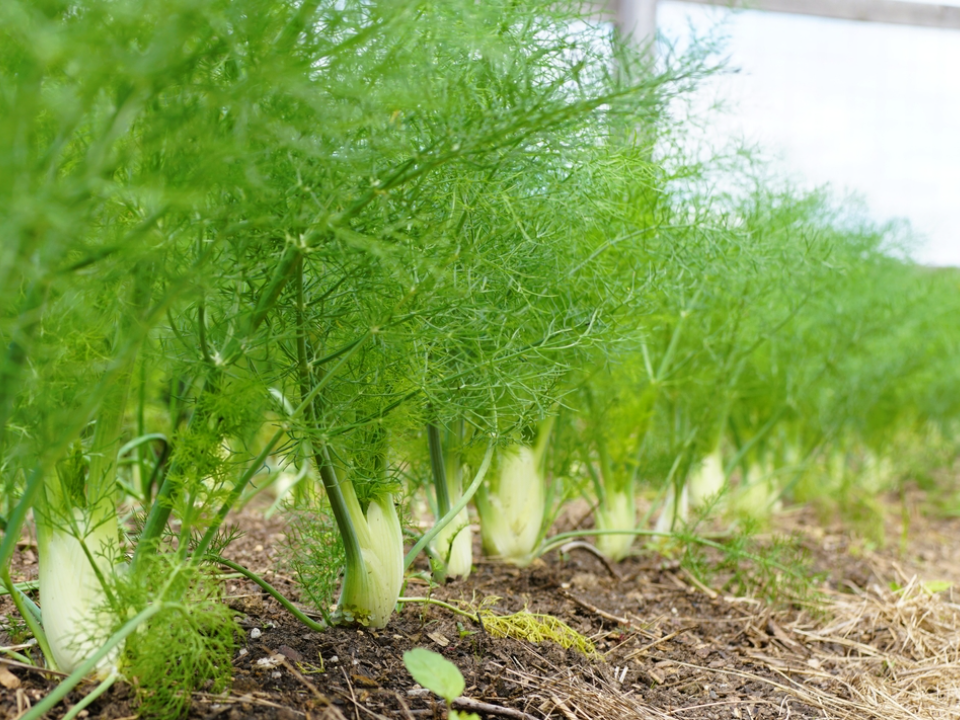
Fennel is a hardy herb that can withstand the cooler temperatures of November. It thrives in full sun and prefers well-drained soil that is kept consistently moist. To maintain healthy growth, trim back any dead or damaged leaves and remove any flower stalks. This herb grows quickly and can be harvested into November, offering a sweet, licorice-like flavor. Fennel is a great addition to your garden, even as the weather cools, due to its hardiness.
Fennel can be used in a variety of ways, from salads to soups and even roasted dishes. Its fronds offer a fresh, aromatic taste, while the bulbs provide a mild, sweet crunch. Fennel also attracts beneficial insects, which helps with pollination in your garden. With its ability to thrive in cooler weather, fennel is perfect for those looking to grow herbs well into fall. It’s a resilient, easy-to-care-for herb that keeps offering fresh flavors in the cooler months.
Arugula

Arugula is another cool-season herb that thrives in November, even as the weather cools. This fast-growing plant prefers moist, well-drained soil and partial to full sunlight. To maintain healthy growth, make sure the soil is kept moist but not waterlogged. Arugula benefits from regular harvesting, which helps keep it producing fresh, peppery leaves. By planting it in a sunny location, you’ll be able to enjoy a steady supply throughout November.
This herb is perfect for adding spice and flavor to salads, sandwiches, and even soups. Arugula grows quickly, meaning you can start harvesting just a few weeks after planting. It’s easy to grow in containers or garden beds, making it versatile for different growing spaces. Arugula’s ability to handle cooler weather makes it an excellent addition to the garden in fall. Its fresh, zesty flavor can be enjoyed well into the colder months.
Mint

Mint thrives in colder weather and will keep growing through November, often becoming even more aromatic as temperatures drop. This herb enjoys partial to full sun and grows best in moist, well-drained soil. To care for mint in fall, keep it well-watered but avoid letting it sit in waterlogged soil. Cutting back the stems once a month can help the plant stay healthy and prevent overgrowth. If you have mint in a container, bring it inside when temperatures dip too low to ensure it survives through the winter.
Mint is also quite versatile and can be used in everything from teas to savory dishes. Its refreshing taste and aroma remain strong in cooler weather, making it a favorite herb for many. However, mint tends to spread rapidly, so consider using a pot to keep it contained. Once frost hits, mint will die back but can be easily revived in the spring. It’s a great herb to have on hand throughout November for fresh flavor and aroma.
Lavender
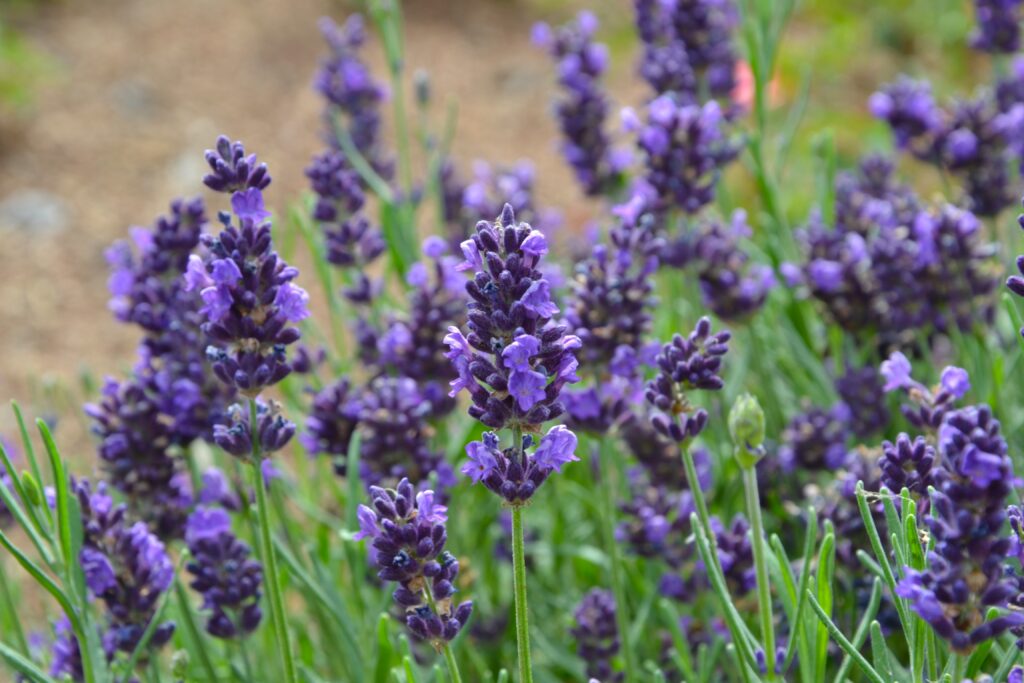
Lavender is a hardy herb that thrives in cooler temperatures, making it an ideal plant for November. This fragrant herb can tolerate light frost, and with the proper care, it will continue to grow even in colder months. Lavender requires well-drained soil and should not be overwatered, as it is drought-tolerant once established. Prune the plant back after the growing season to help it maintain its shape and encourage new growth. During November, a light layer of mulch around the base can help protect the roots from the cold.
Known for its calming scent, lavender is often used in teas, baked goods, and as an aromatic addition to home decor. It also attracts pollinators, such as bees, which makes it great for the overall health of your garden. While lavender may slow down in growth as temperatures drop, it will remain a hardy plant throughout the winter. With minimal maintenance, lavender provides lasting beauty and fragrance, even in colder months. It’s perfect for a low-maintenance herb garden that keeps producing through November.
Winter Savory

Winter savory is a cold-hardy herb that thrives well into the colder months, even through November. Known for its strong, peppery flavor, it grows best in well-drained soil and full sunlight. To care for winter savory, keep it watered moderately, as it doesn’t tolerate soggy conditions. During the cooler months, you can trim the plant back to maintain its shape and encourage fresh growth. This herb can handle light frosts and remains flavorful even after the first chill of the season.
Winter savory is perfect for adding bold flavor to meats, beans, and stews. It’s often used in winter cooking, complementing hearty dishes with its zesty, spicy taste. Unlike other herbs, winter savory holds its flavor longer, making it a valuable addition to your herb garden. The herb is easy to maintain and does not require frequent replanting, making it ideal for fall and winter harvests. By growing it through November, you can enjoy fresh savory leaves well into the colder months.
These hardy herbs continue to thrive through November, offering families the chance to enjoy fresh, flavorful herbs throughout the fall and beyond. With minimal care, these herbs provide a steady supply of ingredients for cooking, making them a great choice for gardeners looking to maximize their fall harvest.
This article originally appeared on Avocadu.
